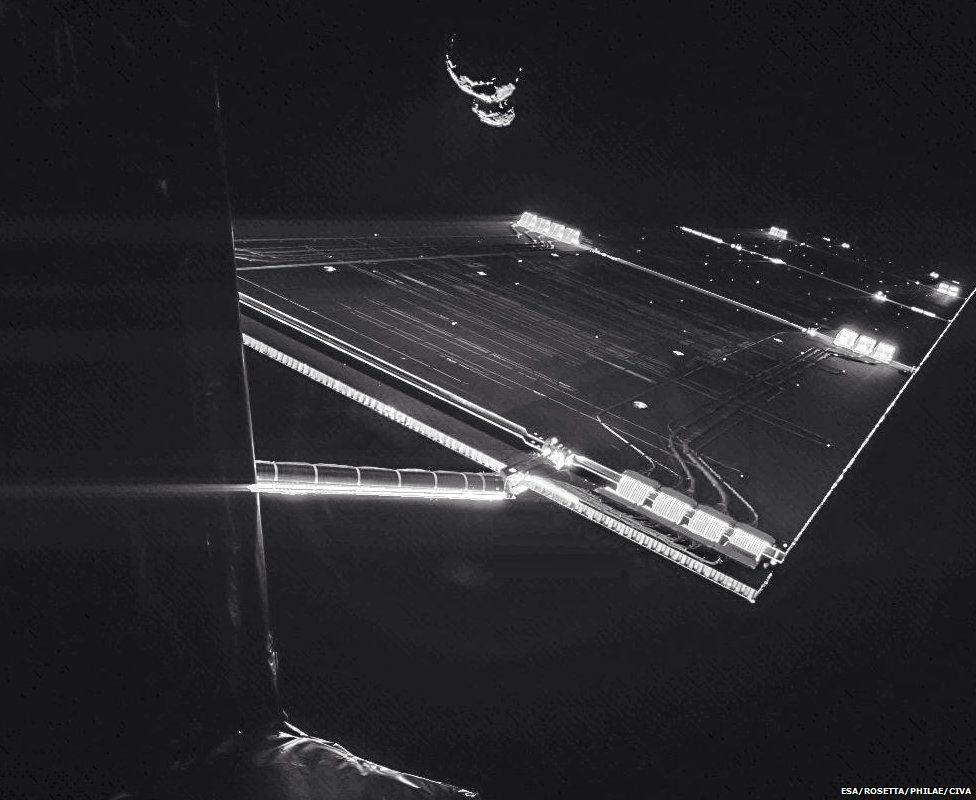Rosetta takes 'selfie' ahead of landing site selection
- Published

The Rosetta spacecraft has sent a hauntingly beautiful picture of itself from deep space.
It was taken with the CIVA camera situated on Rosetta's landing craft known as Philae.
The image was taken on 7 September from a distance of about 50km from the comet seen at the top of the picture.
It shows the edge of the spacecraft and one of its 14m-long solar wings glistening in sunlight against the blackness of space.
Faint details of the spacecraft's protective blanket, the ridges of one of the solar wing's supports can be seen clearly as can the wiring and hinges on the wing itself.
At the top of the picture is Comet 67P also known as Churyumov-Gerasimenko with each of its distinct lobes visible.
Five possible landing sites were chosen last month. They were selected because they appeared to be relatively flat and smooth. But as the spacecraft has neared the comet, its rocky jagged surface which can be clearly seen in this picture has come sharply into focus.
More detailed images show that the potential landing sites are less lander-friendly than had first seemed.
To varying degrees they are strewn with boulders, sloping and have perilous cracks which may turn the Philae lander over as it touches down on the surface in November.
The Rosetta team will spend this weekend studying the latest pictures of the potential landing sites in order to pick out what may turn out to be the least worst option.
- Published2 September 2014
- Published25 August 2014